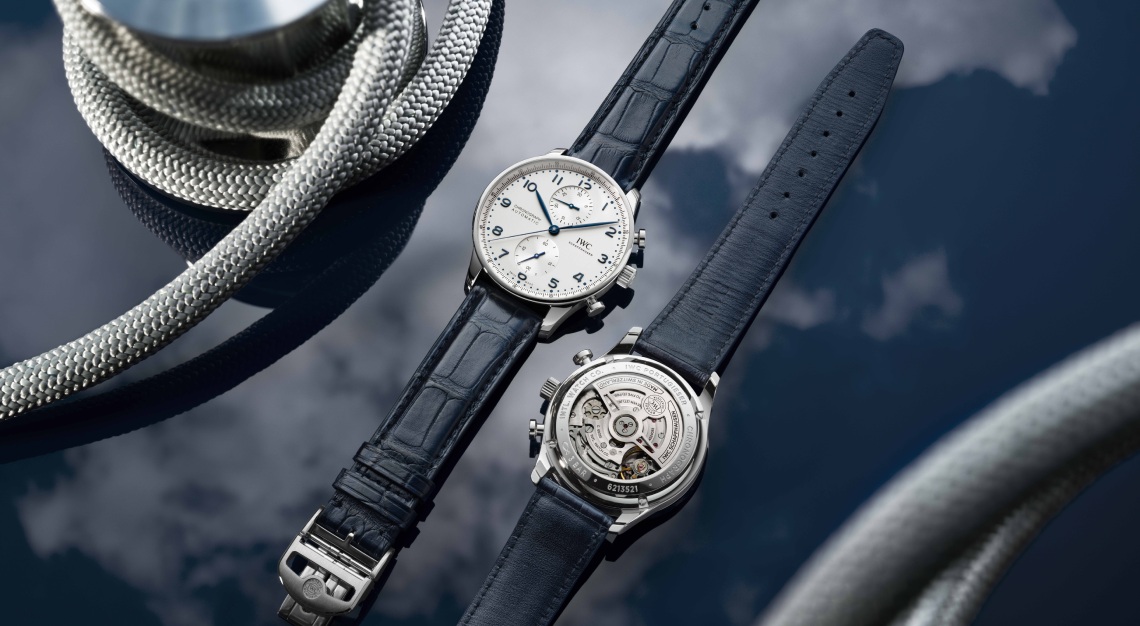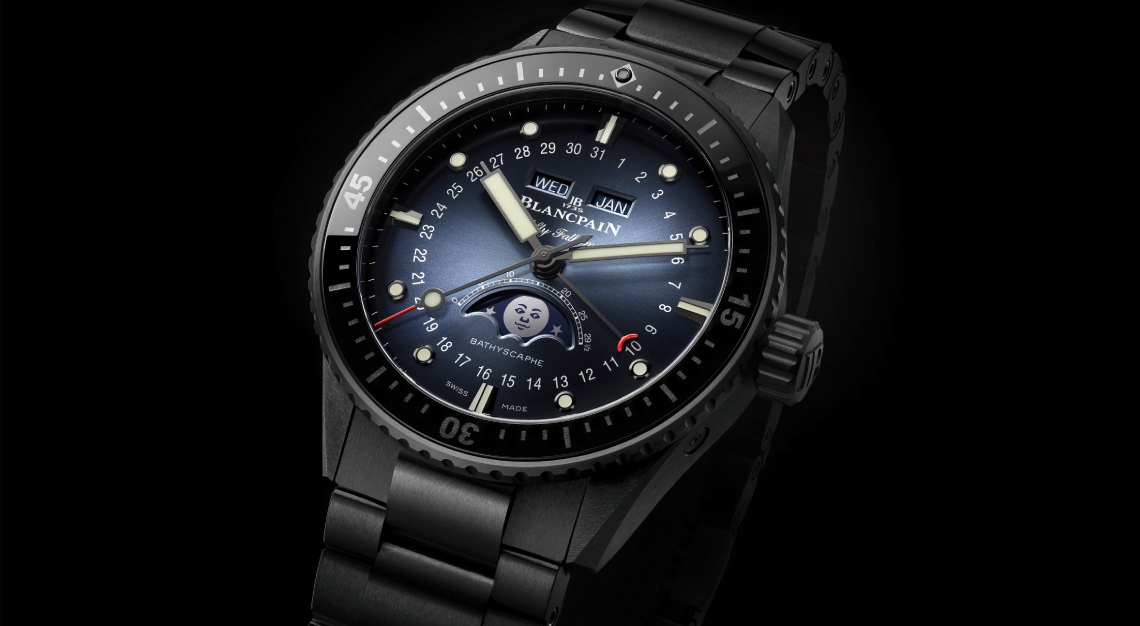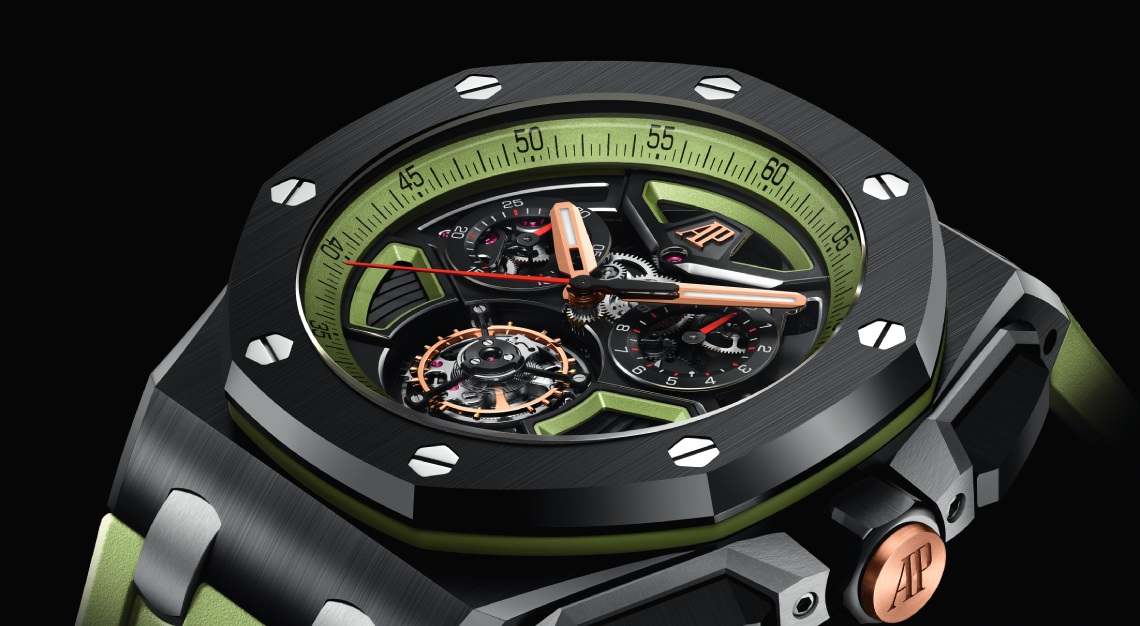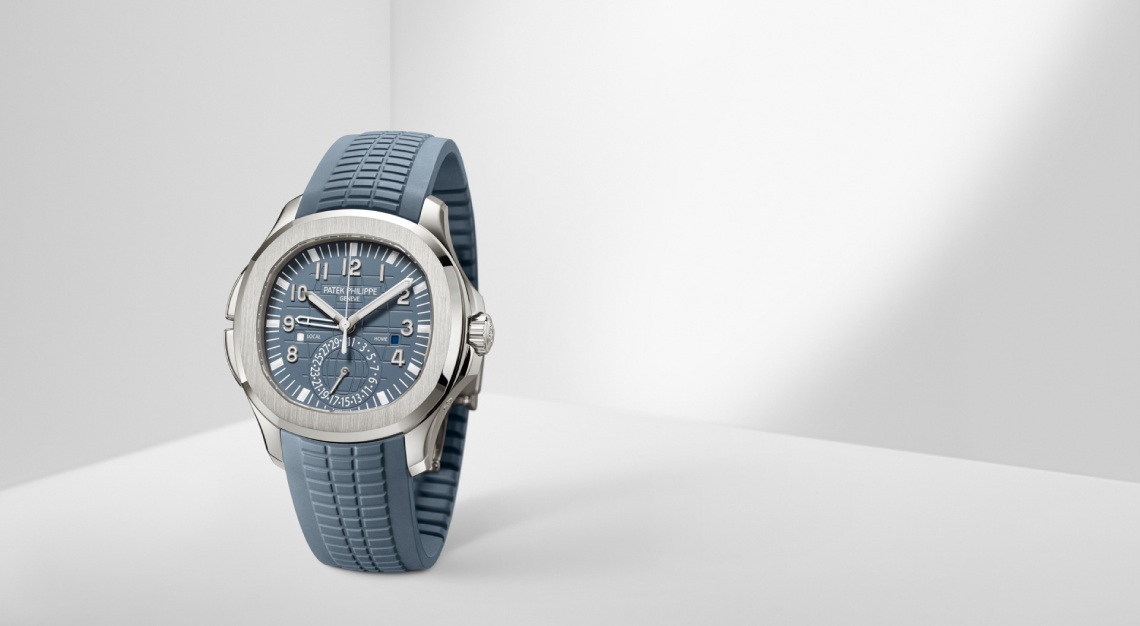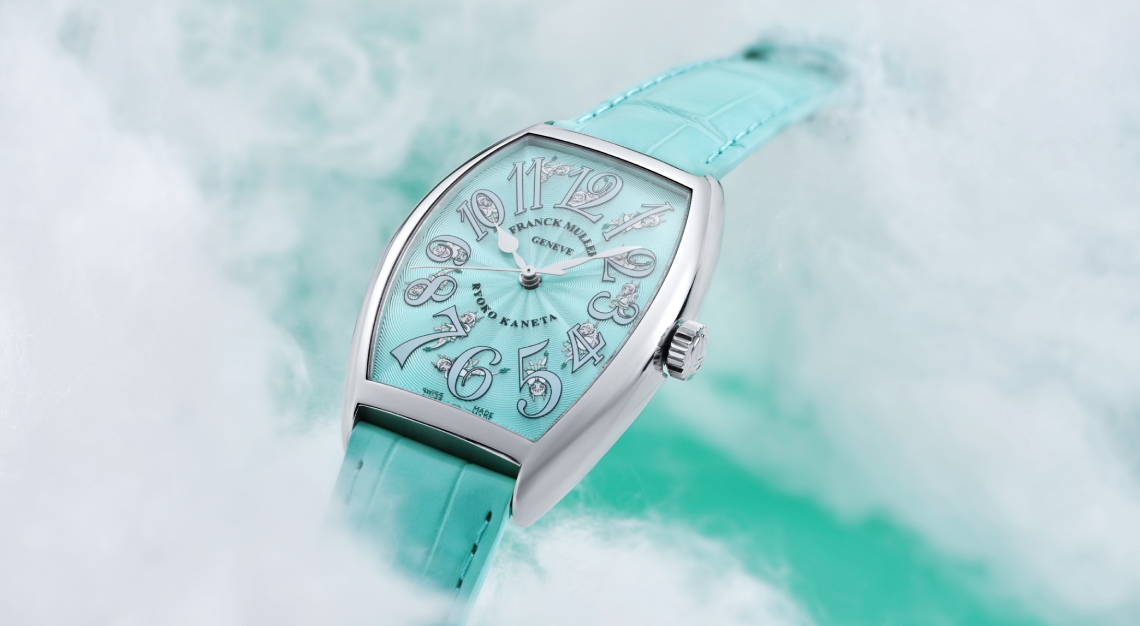IWC Schaffhausen’s chronographs epitomise the consummation of form and function
According to horological standards, IWC Schaffhausen has been making chronographs for a relatively short amount of time. The earliest examples of chronographs were created in the 1800s, and wrist-worn versions followed in the early 1900s. IWC, on the other hand, rolled out its first chronographs only in 1980. But age, as they say, is just a number. The Swiss brand’s chronograph debut hit the ground running and IWC instantly demonstrated its virtuosity and progressive thinking with this popular complication.
The chronograph in question was the Reference 3700, a hardy and high-performance watch made in partnership with Porsche Design. Right away, it disrupted an industry norm dominated by steel chronographs. Reference 3700 was clad instead in lightweight and robust titanium—the world’s first chronograph to be so.
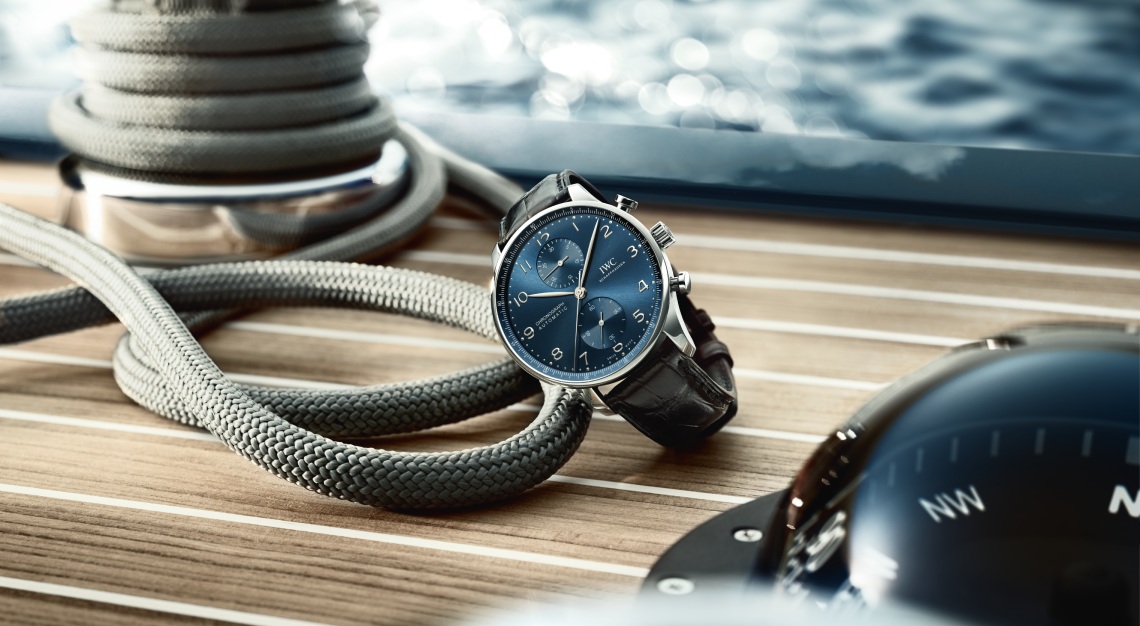
Appreciating IWC’s chronographs requires an understanding of why mechanical chronographs are sought-after by collectors in the first place. The most obvious reason is their practicality. Besides telling the time, chronographs function as a stopwatch of sorts to help measure elapsed interval timings.
And there is a tactile, old-school allure to using these watches, too. To activate a chronograph, the user presses buttons on the side of the watch, which sets off the timing function. The information is displayed on extra subdials, hands and scales, which add sportive dynamism to the watch’s design.
This complexity is mirrored under the dial. Watch lovers often hail chronograph movements as among the most architecturally beautiful. Comprising more moving parts than a regular time-only mechanical movement, a chronograph movement is an intriguing web of gears and bridges that not only look stunning, but are engineered to be extremely hardy and precise.
So, to sum up, chronographs are useful, look great and require an immense amount of skill to make—factors that IWC has internalised to an impressive degree over the last four decades.
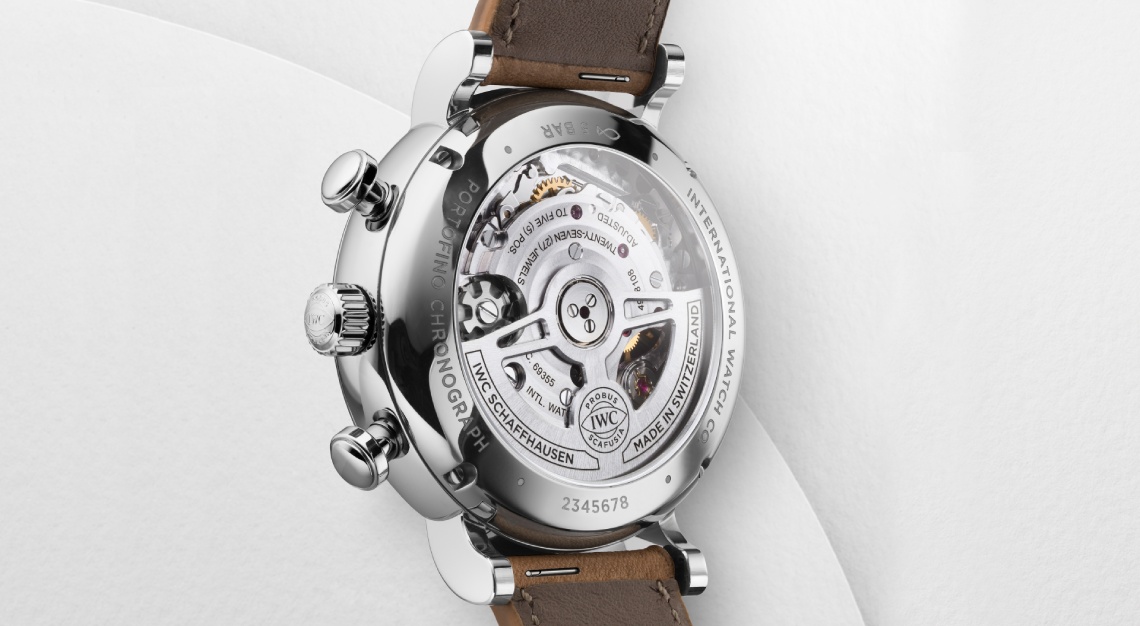
Pushing ahead
Since Reference 3700’s game-changing debut, IWC hasn’t stopped investing in materials research. Over the years, the brand has housed its chronographs in a variety of cutting-edge and visually stunning materials, from scratch-resistant coloured ceramic to the patented Ceratanium, which combines the advantages of ceramic and titanium into a single light and tough alloy.
At the same time, IWC also made huge strides on the technical front with increasingly sophisticated and complex chronographs. In 2007, the brand launched the Pilot’s Watch Double Chronograph, which measures two separate times instead of one. IWC followed it up with the Portofino hand-wound mono-pusher chronograph in 2015, which requires only one push-button instead of two to activate the chronograph function.
Arguably the most significant addition to IWC’s chronograph arsenal, however, is its family of in-house chronograph movements, which debuted in 2017. Known as Calibre 69000, the line of proprietary movements took five years to develop. Designed and manufactured completely by IWC, the Calibre 69000 range of chronograph movements is feted by aficionados to be among the most reliable on the market today.
“We made no compromises in streamlining the Calibre 69000 for efficient energy use and maximum robustness,” explains Markus Buhler, the brand’s associate director of watch and movement assembly.
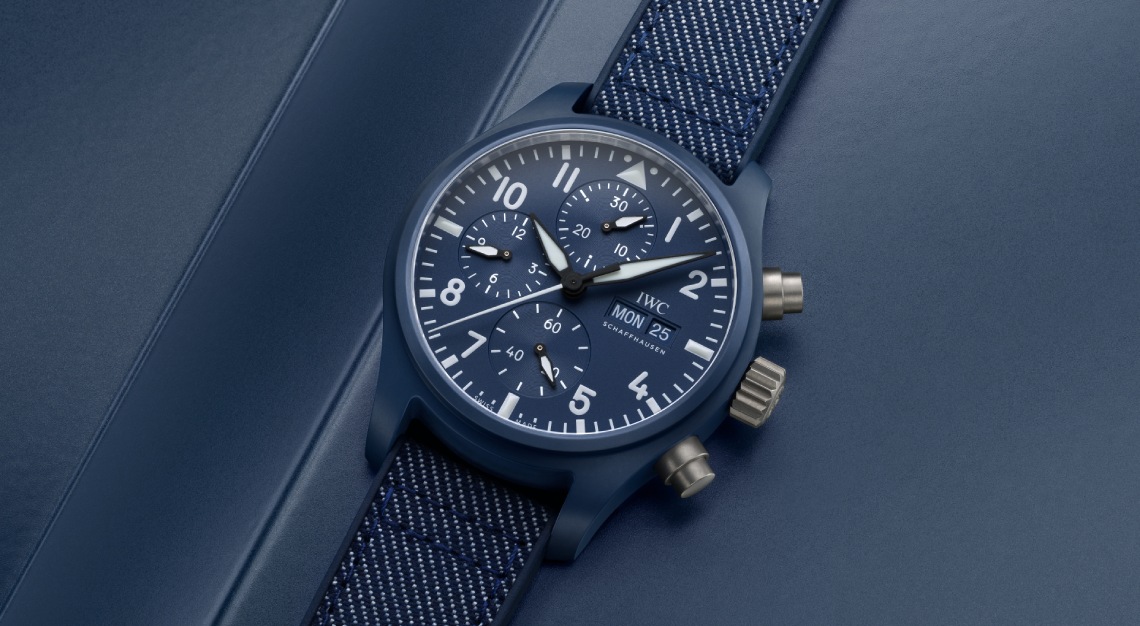
Since then, the workhorse movement has been deployed in an assortment of models bearing wonderfully diverse styles. If you’re looking for a chronograph that echoes the complication’s heritage, the Portugieser Chronograph ticks all the boxes with its elegant two-counter layout, a flange with a quarter-second scale, applied Arabic numerals, slim feuille hands and filigree bezel. Available in 18k rose gold or stainless steel, there are six classy variations to choose from with different dial colours.
Chronographs can also look refreshingly modern, as evidenced by the Portofino Chronograph 39. A triumph of purity, the 2022 release features a clean and crisp monochromatic dial with rhodium-plated leaf-shaped hands. The piston pushers and straight lugs give it a vintage appeal, especially when paired with its beige calf leather strap. Both the Portofino Chronograph 39 and the Portugieser are powered by the automatic 69355 calibre with 46 hours of power reserve.
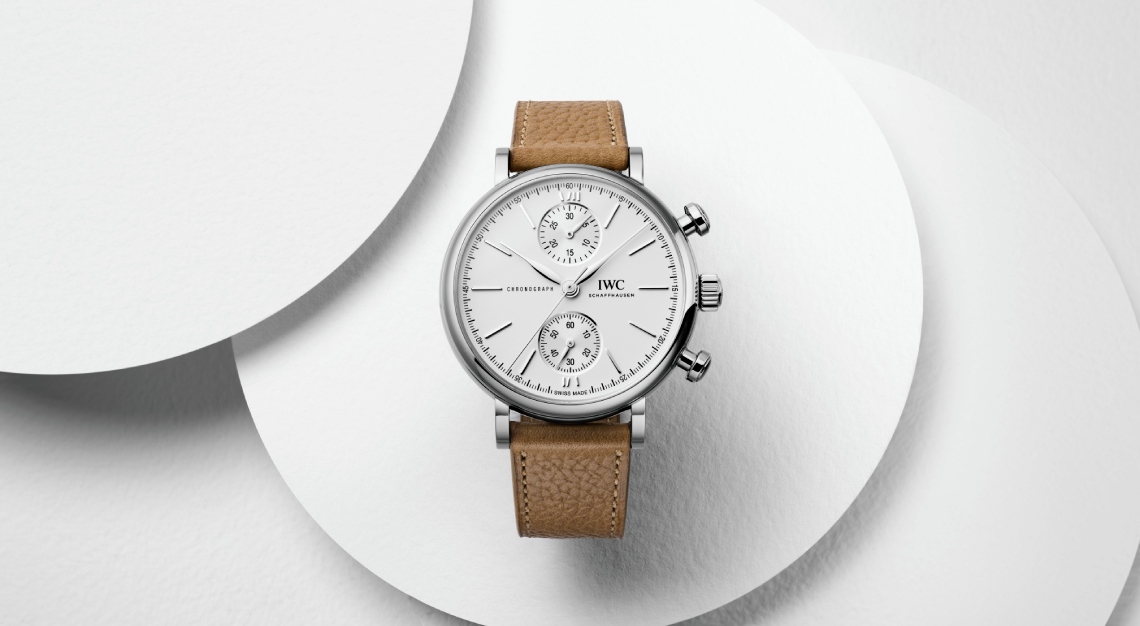
Of course, if you want an archetypal sporty chronograph bursting with grit and bravado, look no further than the iconic Pilot’s Watch. Two new 41mm models have been added to the Top Gun family this year. The Pilot’s Watch Chronograph 41 Top Gun Oceana features a navy hue inspired by the US Navy’s overalls for the watch’s case, dial, and denim and rubber strap. The other model offers a traditional aviator look with its Jet Black colourway, with white luminescent indices, hands and indicators offering stylish contrast. These run on the automatic 69380 calibre and are protected against magnetic interference by soft-iron inner cases. They are also water resistant to 100m.
“Chronographs are a fundamental part of our collections. To produce chronographs to the highest possible quality standards, we continually push forward with new materials, industry-leading manufacturing processes, testing standards and quality management,” stresses Christoph Grainger-Herr, CEO of IWC. With a healthy dose of stylish versatility in the mix, collectors of all persuasions, too, ought to find it easy to make an IWC chronograph a fundamental part of their own watch collections.
